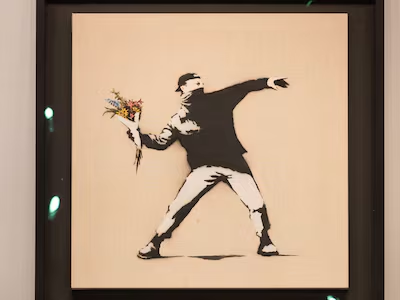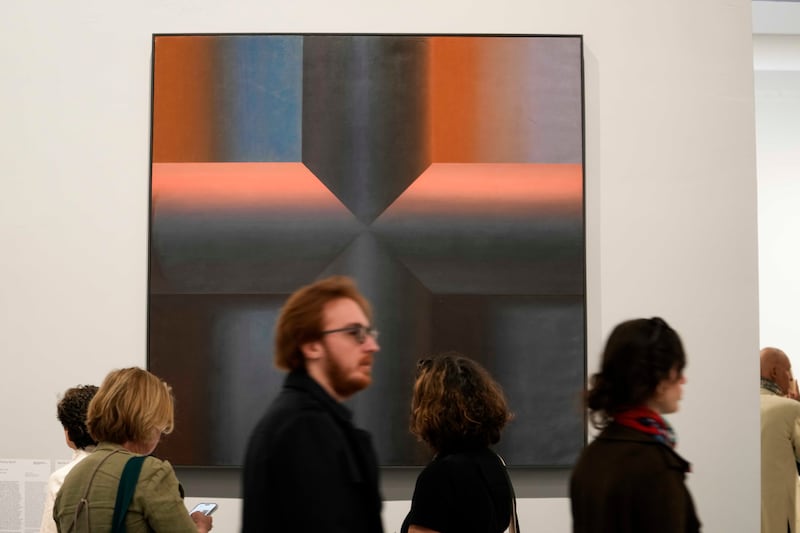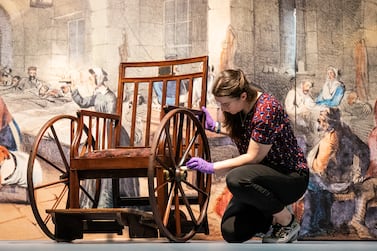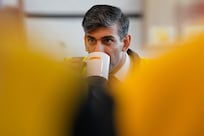In the evolution of society, art has emerged as a powerful tool for activism, mirroring the collective conscience of global communities and being a catalyst towards positive social change.
Artists have wielded their creative aptitude to address cultural power structures, including injustices and taboos, with the intention to provoke reactions, raise awareness and discourse. Banksy's numerous street art, for example, is rife with anti-war and anti-establishment messaging.
Yet, the journey of art activism has been fraught with obstacles, particularly within the institutions from universities to museums, where the clash between creative expression and institutional censorship has sadly been on the rise, as witnessed by the response of major institutions to global events of the past decade and in one stark example, the war in Gaza and overall political tensions this has caused in the West and the region.

Throughout history, museums have occupied a paradoxical position in relation to art activism. On one hand, they are committed to cultural material preservation, education and promoting humanity's collective heritage.
On the other, they now find themselves being involved in political and social dynamics as the expectations of what these institutions stand for continue to grow. Many museums and other cultural organisations are struggling with the responsibility to both respond to social justice issues and simultaneously appease diverse audiences and the leadership of these institutions, mainly the impenetrable trustee model of most Western museums.
The roots of art activism can be traced back to the avant-garde movements of the early 20th century, where artists such as Frida Kahlo and the Surrealists, were viewed as rebels, praised by many for challenging societal norms through unconventional artistic expressions.
As societal dynamics evolved and revolutions proliferated, art became a a persuasive and effective tool, amplifying the voices of underrepresented communities and questioning established power dynamics.
However, the reception of art activism within museum and cultural organisations, including university museums has been inconsistent. In my career over the past two decades, I have been frustrated with how museums across the world can tend to waver between embracing progressive ideals and yielding to pressure from politicians and privileged social classes.
During times of social upheaval, museums have often provided platforms for critical discourse by hosting bold exhibitions and commissioning artists who challenge existing norms and fuel crucial conversations.
This, I have always believed, is fundamental to what museums and other civic spaces should support. Yet, history has shown us that during periods of political repression, they have also played a role in suppressing this vital role, restricting artworks and artists, deemed nonconformist, outspoken and/or controversial.
The 21st century has witnessed a resurgence of art activism, propelled by the digital revolution of social media and the subsequent democratisation of information and content. From the Arab uprisings in 2011 to the Black Lives Matter movement a few years later, artists from around the world have leveraged their creative voices to highlight systemic injustices and help mobilise communities for change.
However, this newfound freedom of expression has also exposed the hypocrisy within a vast number of Western institutions, where the challenge of navigating the ever-shifting landscape of political correctness and cultural sensitivities is growing.
In recent years, we have witnessed a troubling trend of museums silencing artists whose works challenge prevailing beliefs or provoke discomfort among certain powerful segments of society with new or opposing viewpoints.
The rise of cancel culture and ideological polarisation has been especially intense since the start of the Israel-Gaza war. Since October, tensions have been exacerbated within the museum world, restricting the free exchange of ideas and attitudes to the war in Gaza and the subsequent rise in anti-Semitic and anti-Muslim sentiments and violence.
This has not been exclusive to museums but has included various cultural related activities, including the cancellation of two Palestinian Film Festival events at Bristol’s Arnolfini arts centre, Christie’s auction house removing two works by Lebanese artist Ayman Baalbaki, whose paintings depicted a man wearing the keffiyeh that is synonymous with Palestinian identity, the cancellation of the exhibition of renowned Palestinian-American artist Samia Halaby at Indiana university, who we celebrated with her first retrospective in Sharjah last year, and the cancelation to honour Palestinian novelist Adania Shibli with an award at the Frankfurt Book Fair, which Sharjah International Book Fair officials condemned and therefore withdrew from participating in solidarity with upholding creative expression.
The examples are numerous, including any artists that question or appear to criticise Israel’s military operations and strategy in this war. The consequences of this backlash are dire, posing a threat to the very essence of artistic expression and the fundamental principles of democracy as advocated and upheld by several Western countries.
By censoring these voices, cultural institutions are not only betraying their core values to foster critical dialogue and understanding but they are also undermining the foundation of a pluralistic society.
In a world increasingly polarised along ideological lines, the role of museums and cultural institutions, including those of higher learning, has never been more crucial.
Being educated in the US myself, born of one Palestinian parent, and a museum professional for almost 20 years in my birth country, the UAE, my plea is that we as leaders in cultural institutions use our agency and recommit to our role as champions of artistic freedom, social justice, equity and inclusion.
Only by embracing diverse perspectives and fostering open dialogue can museums and cultural institutions globally fulfil their mission to educate and empower future generations to create a more just and equitable world.






